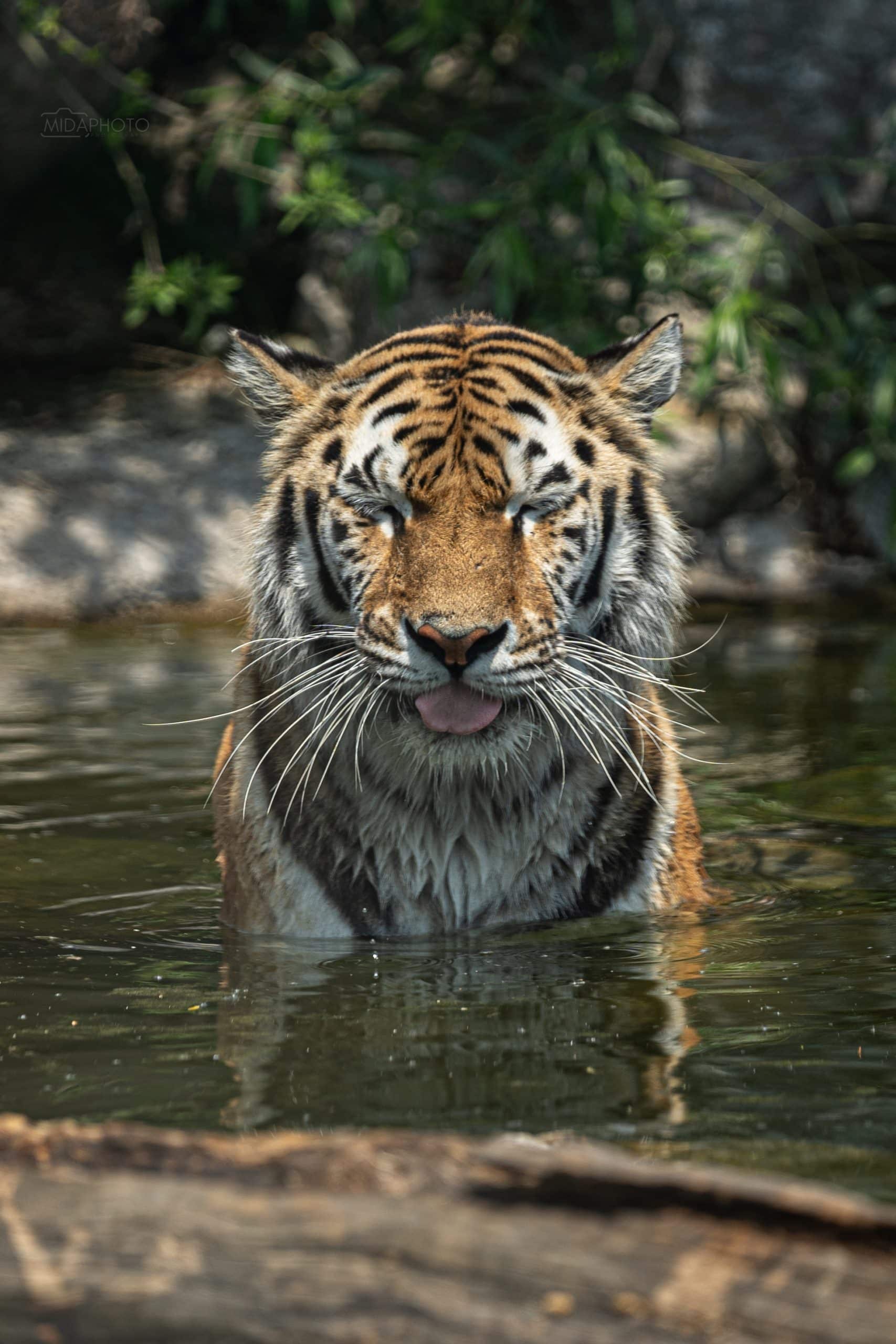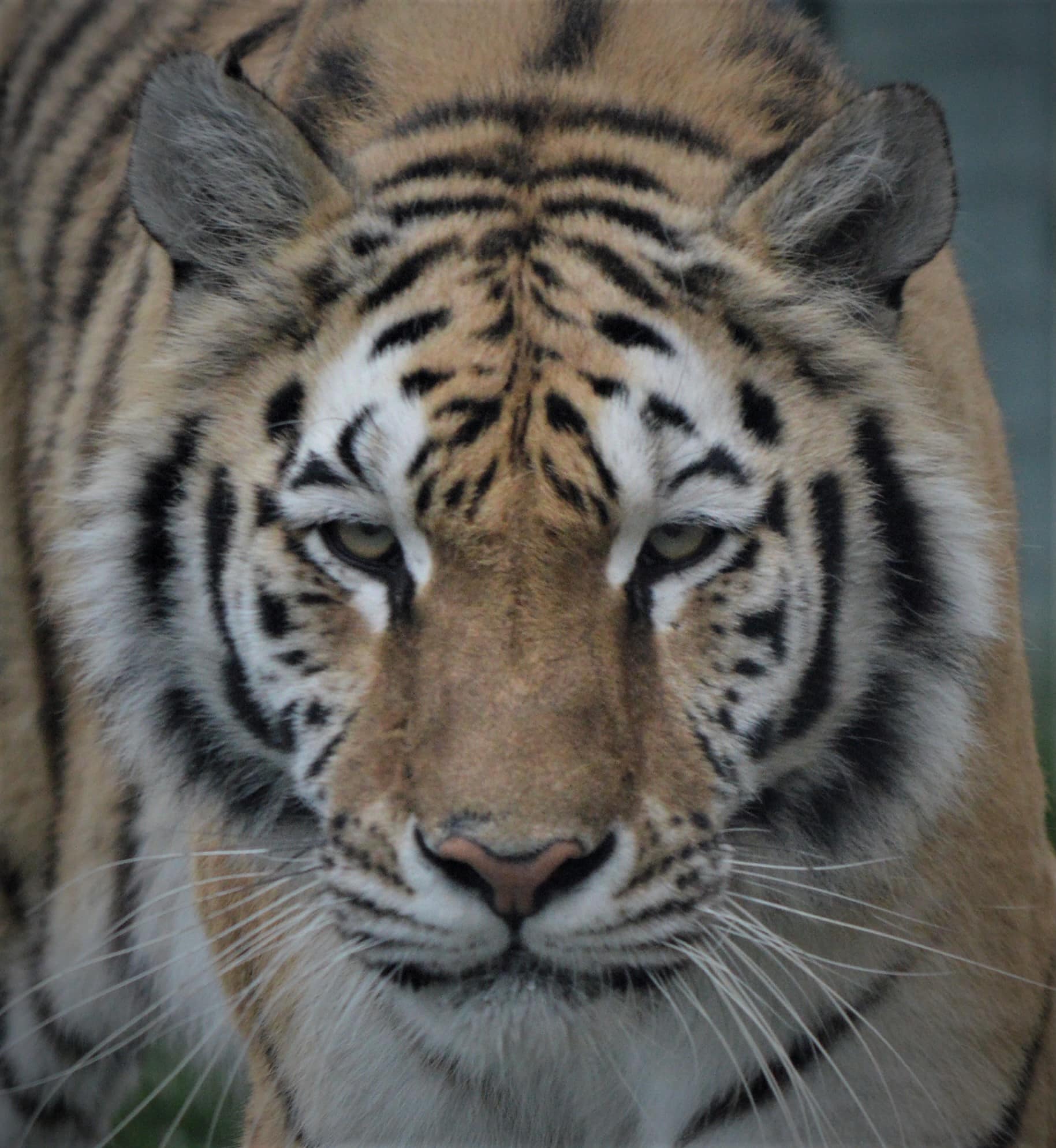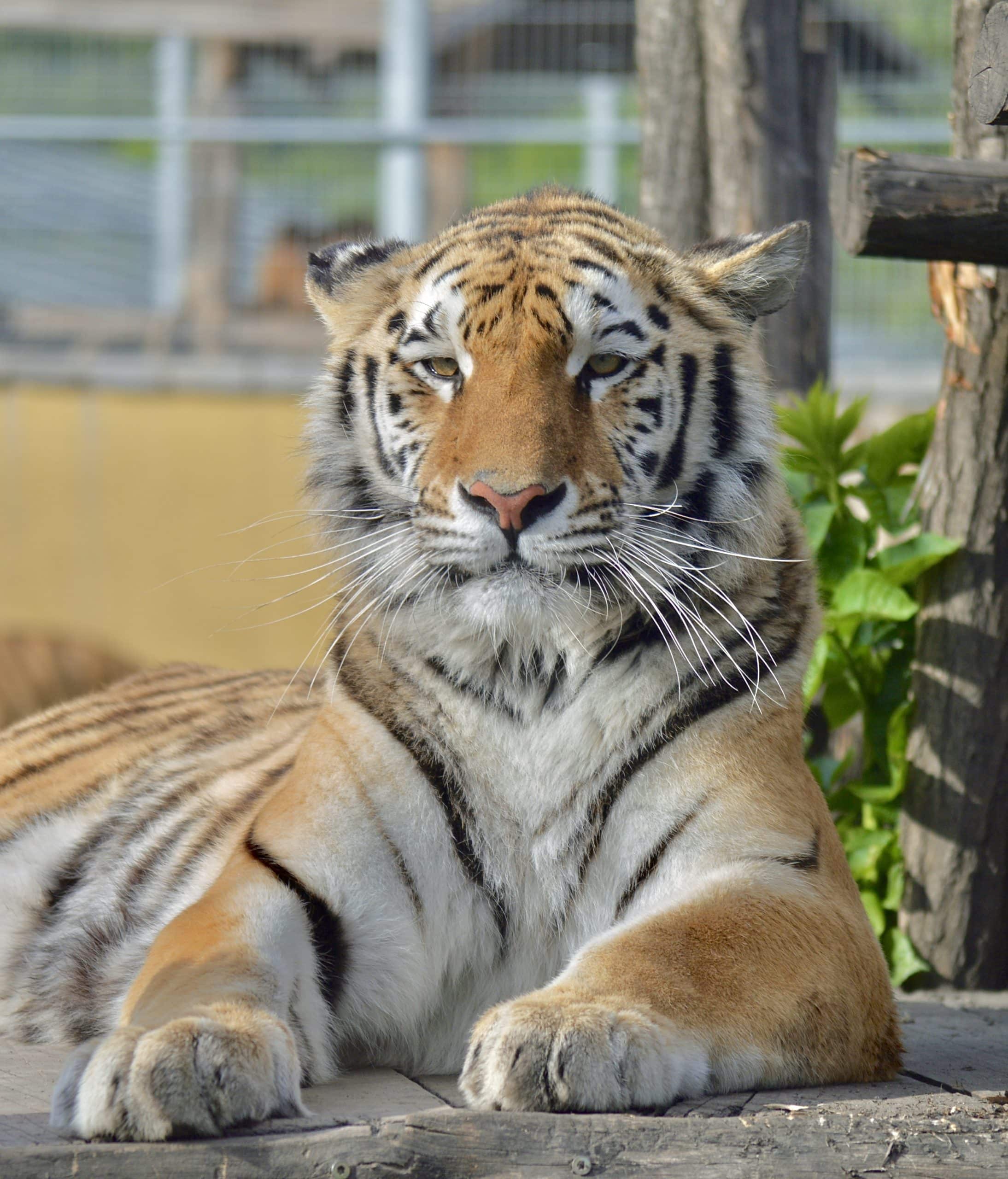Siberian tigers are the largest of all tiger subspecies. The basic coloring of the coat is red-orange in summer, yellowish in winter. The white fur on the belly extends to the groin. The ears are very short, which corresponds to the extremely cold climate of its home environment.
One of the most distinctive characteristics of a tiger is its stripes. Each tiger has its own distinct pattern, like human fingerprints, making them unique. Their skin is as striped as their fur.
The tiger has excellent eyesight, its eyes can register movement much more perfectly and quickly. Spatial vision is important for successful tracking of prey, perfect estimation of distance when jumping, accurate idea of shape and appearance of prey or enemy. At night, his eyes can see 5 times better than human eyes.
Tigers are territorial loners who mark their territory. Brands are regularly reviewed and updated. Two to three females can live in a male’s large hunting territory, and they are mostly tolerant of each other. Tigers communicate in several ways – verbally and non-verbally. A tiger’s snort is a friendly greeting. The tiger’s roar can be heard up to 3 km away.
Tigers only pair up during breeding season. The female does not wait for the male, but often goes on a journey alone, sometimes several hundreds of kilometers long, in order to meet the male in time and successfully mate. They spend several days together during which they mate many times. The male then leaves the female. The female takes care of the cubs alone, and does not leave them alone for the first days of life. After about two weeks, the cubs open their eyes and begin to grow teeth. At the age of two months, they leave the shelter for the first time. The mother brings them meat, although she sometimes breastfeeds them for up to 6 months. Their mother teaches them, and at the age of 1, they go out hunting on their own to see what they have learned.
At the beginning of the 20th century, there were around 100 thousand tigers in the entire range. Today, there are approximately only 3000 to 4500 in the wild.
Tigers love water, so each of them must also have a deep pool in captivity in which they can swim. In the wild and in captivity, tigers even hide their food in the water.
Although it can develop great speed, it does not chase fleeing prey more than 300 meters. Most of the time, he will not be able to catch the target prey while running, because the deer are faster and, above all, more persistent. The tiger attacks exclusively from behind, from the back.
Also important in hunting are strikingly strong, so-called sinus tactile whiskers on the tiger’s muzzle. If the whiskers touch the prey, the tiger will attack immediately even in complete darkness.
It survives in extreme temperatures even at -45 degrees Celsius. In the area of the groin and abdomen, a fat layer about 5 cm thick protects it from icy wind and low temperatures.




